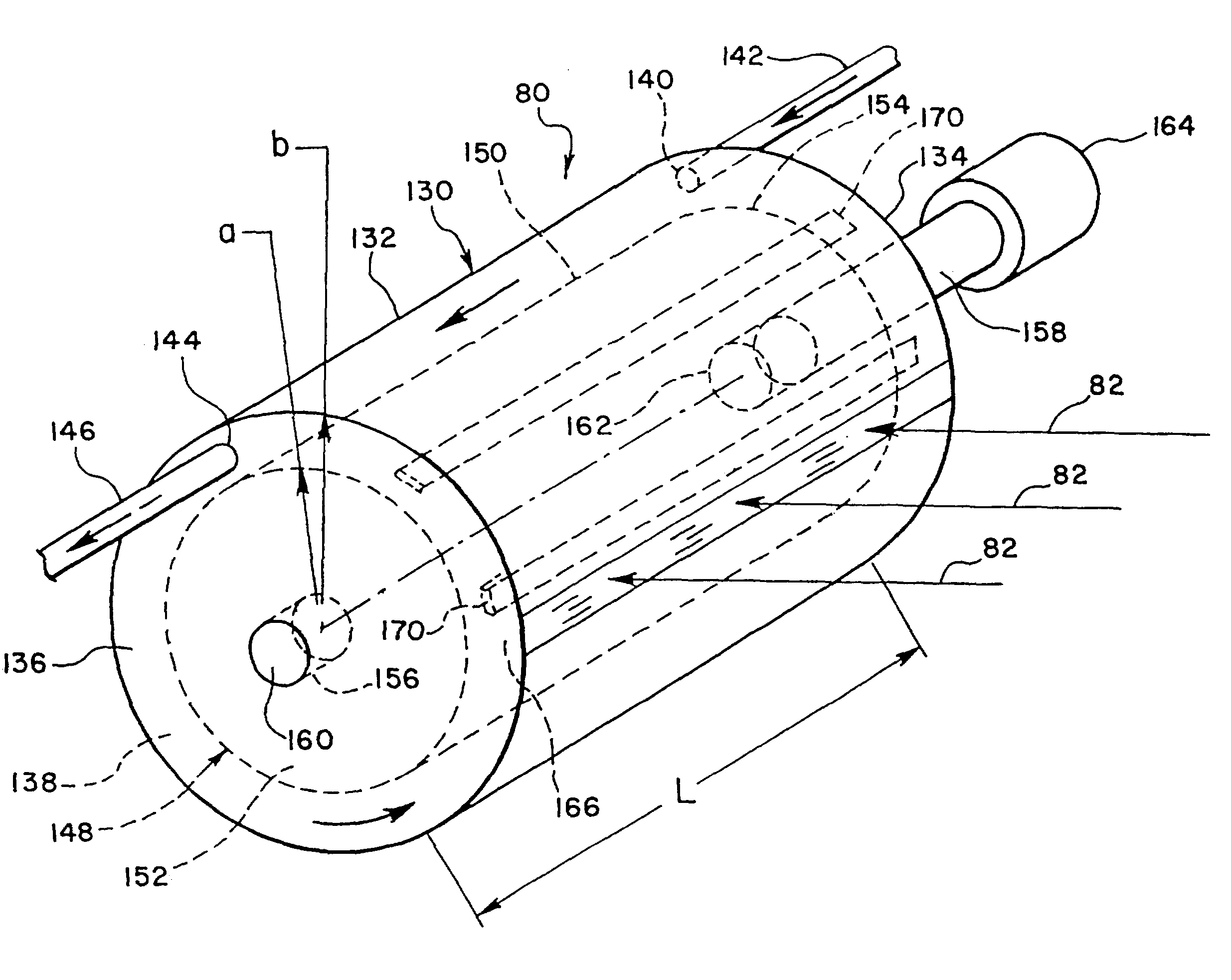Process for the solvent extraction for the radiolysis and dehalogenation of halogenated organic compounds in soils, sludges, sediments and slurries
a technology solvent extraction, which is applied in the field of solvent extraction for the radiolysis and dehalogenation of halogenated organic compounds in soils, sludges, sediments and slurries, can solve the problems of large environmental burden in water, sediments, soil, disposal sites, etc., and achieves efficient radiolytic dehalogenation, high radiation dose, and high utilization efficiency of radiation source output power
- Summary
- Abstract
- Description
- Claims
- Application Information
AI Technical Summary
Benefits of technology
Problems solved by technology
Method used
Image
Examples
examples
[0082]The following is a description of tests performed with Aroclor 1260 to determine the dose-constant for treatment of PCB by the flotation / extraction and radiolysis process. FIGS. 5–12 show dose-concentration curves for test samples 1–8. The reduction in concentration as dose increases can be fit to an exponential function and the dechlorination rate (dose constant) can be determined. The results of these tests are summarized in Table I. The dose-constant is given by:
[0083]γ=1Dln(CoC)
[0084]
TABLE ITest ResultsInitial Aroclor 1260Dose constantTest SampleConcentration(1 / (megarad))1. Spiked soil200 mg / kg0.011 + / − 0.0012. Spiked soil 58 mg / kg 0.016 + / − 0.00253. Flotant / Soltrol / t-butanol310 mg / liter0.413 + / − 0.1084. Flotant / Soltrol / isopro-310 mg / liter (ppm) 0.44 + / − 0.020panol5. Flotant / Soltrol / t-butanol728 mg / liter0.242 + / − 0.0346. Flotant / Soltrol / isopro-784 mg / liter0.176 + / − 0.027panol7. Spiked Soltrol / t-butanol232 mg / liter0.194 + / − 0.0478. Spiked Soltrol / isopro-232 mg / liter0.202 ...
PUM
 Login to View More
Login to View More Abstract
Description
Claims
Application Information
 Login to View More
Login to View More - R&D
- Intellectual Property
- Life Sciences
- Materials
- Tech Scout
- Unparalleled Data Quality
- Higher Quality Content
- 60% Fewer Hallucinations
Browse by: Latest US Patents, China's latest patents, Technical Efficacy Thesaurus, Application Domain, Technology Topic, Popular Technical Reports.
© 2025 PatSnap. All rights reserved.Legal|Privacy policy|Modern Slavery Act Transparency Statement|Sitemap|About US| Contact US: help@patsnap.com



